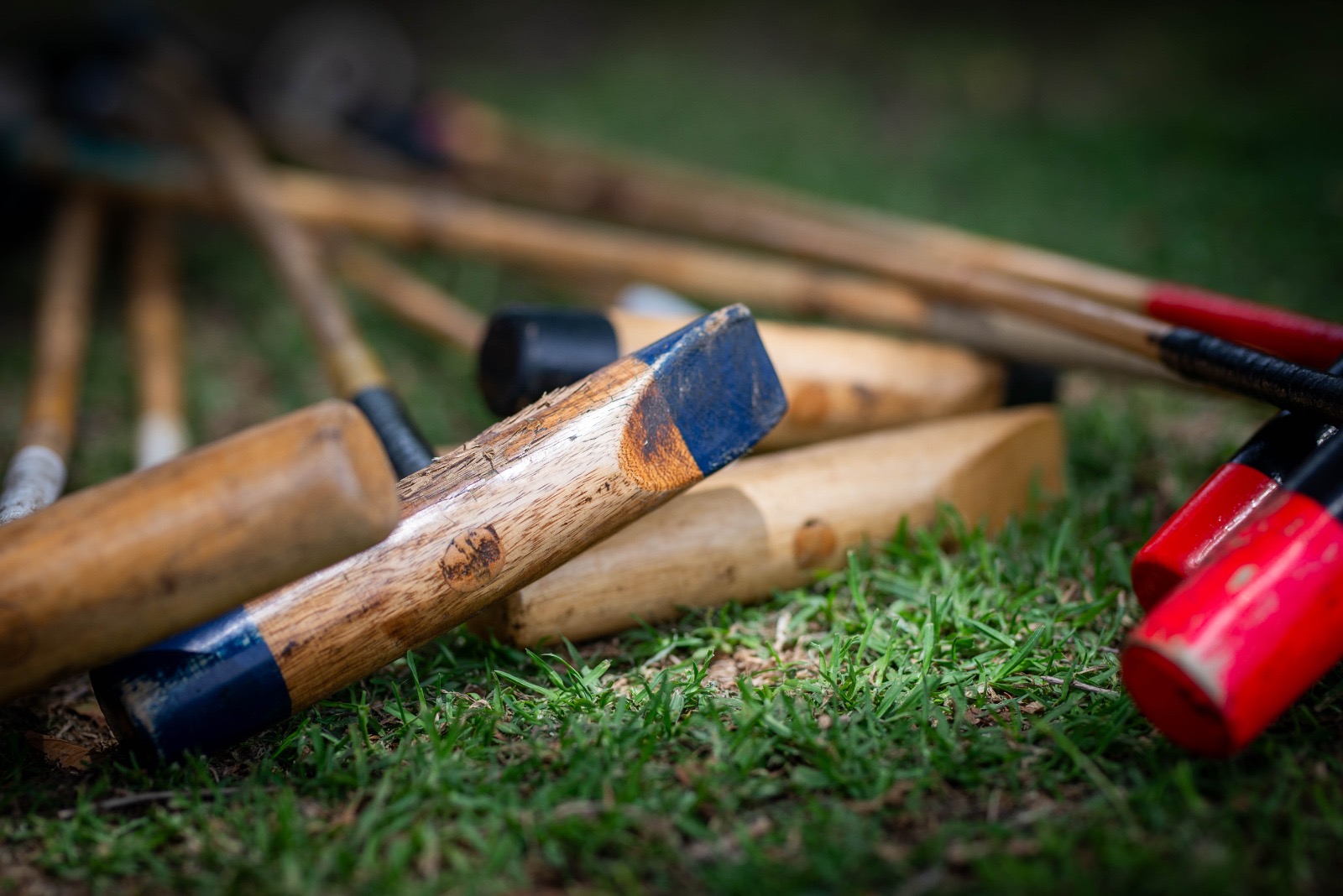Choosing the right polo mallet is essential for improving your performance on the field. A well-matched mallet enhances control, accuracy, and power while minimizing strain on your wrist and arm. This guide will help you understand the key factors to consider when selecting a polo mallet.
1. Understanding Polo Mallet Components
A polo mallet consists of three main parts:
- Cane: The shaft of the mallet, typically made from manau cane or composite materials.
- Head: The wooden striking end, usually crafted from tipa wood.
- Tack Grip: The handle wrap that ensures a firm grip during play.
2. Choosing the Right Mallet Length
Mallet length is one of the most critical factors, as it affects your reach and swing mechanics. The general guideline is:
- 48 inches: Suitable for shorter players or ponies under 14.2 hands.
- 49–50 inches: The most common sizes, ideal for medium-height players and ponies between 14.2 and 15 hands.
- 51–53 inches: Preferred by taller players or for reaching longer shots on larger horses.
Your mallet length should allow you to strike the ball comfortably without overextending or losing balance.
3. Selecting the Right Weight
Mallet weight typically ranges between 160 to 220 grams (5.6 to 7.8 oz). The choice depends on your playing style:
- Lighter mallets (160-180g): Offer quicker swings and better control, ideal for wristy players who rely on finesse.
- Medium mallets (180-200g): Provide a balanced combination of power and control, making them a versatile choice.
- Heavier mallets (200-220g): Generate more power for long-distance shots but require greater strength to maneuver effectively.
4. Cane Material: Traditional vs. Composite
- Manau Cane: The classic choice, known for its natural flex and durability. It offers excellent feedback and control but may warp over time.
- Composite Mallets: Made from fiberglass or carbon fiber, these mallets are more durable, consistent in weight, and resistant to weather changes.
Traditionalists prefer manau cane for its feel, while modern players may opt for composite mallets for durability.
5. Choosing the Mallet Head
The mallet head should be made from tipa wood, a durable and lightweight material. Consider these aspects:
- Heavier heads provide more power but require stronger wrists.
- Lighter heads allow for quicker movement and easier control.
- Shape: Wider heads offer a larger striking surface, while narrower heads allow for more precision.
6. Grip and Handle Comfort
- Tack grip is crucial for a non-slip hold.
- Thin grips allow better finger control and flexibility.
- Thicker grips reduce wrist strain and improve stability.
Many players customize their grip with additional wraps or cushioning to enhance comfort.
7. Testing and Personal Preference
If possible, test different mallets to find the best fit. Factors like playing style, wrist strength, and personal preference all play a role in choosing the ideal mallet.
Conclusion
Selecting the right polo mallet involves balancing length, weight, material, and grip comfort. Experiment with different mallets and seek advice from experienced players or suppliers to find one that complements your skills and playing style. With the right mallet in hand, you’ll maximize your performance and enjoyment on the polo field!


